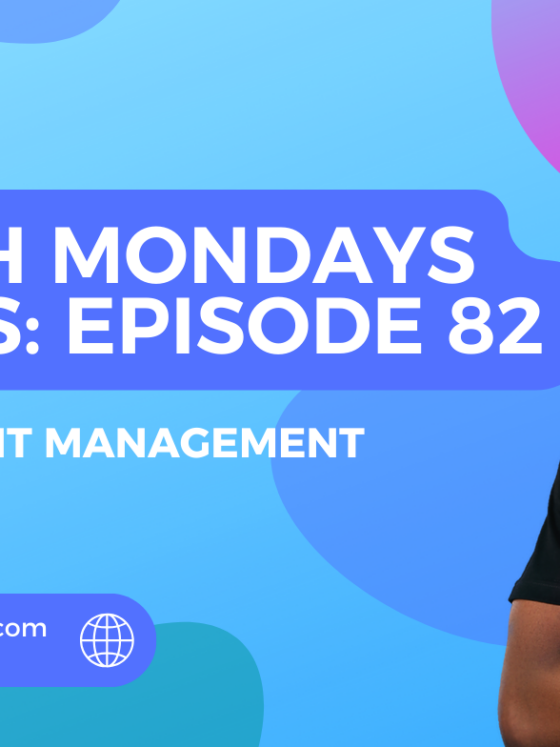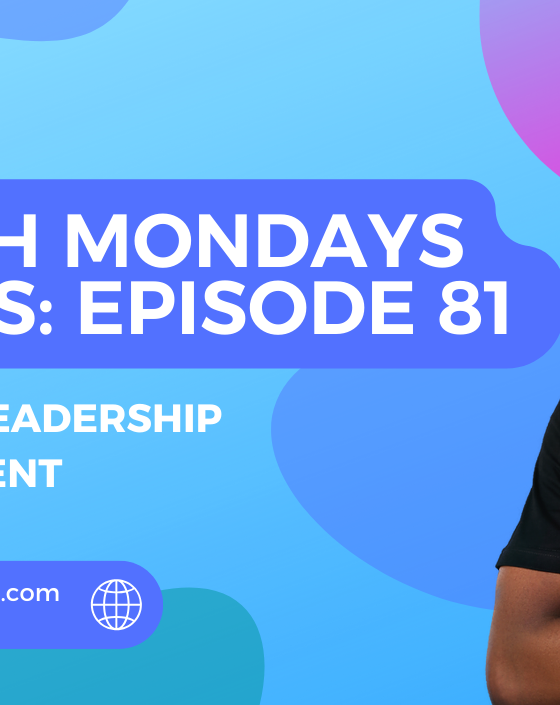Overcoming Barriers to Digital Transformation with Digital-First Business Models
North Mondays Series: Episode 120

Why Digital-First Business Models Are Still Being Resisted in 2025
“If it’s not broken, don’t fix it.”
It’s one of those phrases that rolls off the tongue with the ease of common sense. A gentle warning against unnecessary change. In many cases, it’s valid advice but after thinking about it overtime, I have a score to settle with this phrase.
“If it’s not broken” assumes the goal is survival.
If you’re trying to grow, to lead, to stay competitive in a digital-first economy, then the goal can’t be to simply preserve what’s working. The goal is to build what’s next.
And that requires change.
Which, let’s be honest, is something most people struggle with deeply.
Change isn’t just inconvenient. It’s disorienting.
It disrupts workflow and introduces risk, uncertainty, and that dreaded learning curve no one really has time for.
So what happens?
Even when the new system is clearly better, people hold onto the old one.
Even when the data says it’s time to evolve, leaders cling to what’s familiar.
Even when competitors are running ahead, businesses convince themselves they’re “not doing too badly.”
And that’s where digital transformation fails; not in the tech, but in the culture.
Because in most cases, the software works just fine.
It’s the people who won’t log in.
Cultural Resistance: The Real Barrier to Digital-First Business Models
In this episode of North Mondays, we’re unpacking the real reason many organizations continue to resist digital-firstbusiness models in 2025.
It’s not about budgets or tools.
It’s about belief systems.
The biggest obstacle to digital transformation isn’t cost. It’s culture.
Because people don’t resist tech.
They resist the loss of control, the fear of irrelevance, and the disruption of routines that feel like second nature.
You introduce a cloud-based system to manage operations and someone quietly goes back to Excel.
You suggest automating customer support and the manager says, “But our customers prefer the human touch.”
They’re not being difficult. They’re being human.
If you’re a founder or leader trying to implement change, this is the tension you’re up against:
The tools may be brilliant but your people are still mourning the comfort of the old way.
If your internal culture can’t embrace that shift, you’ll fall behind.
Let’s get into what’s actually holding you back, and how to lead the shift with clarity, empathy, and momentum.
Digital-First Business Models as the Default, Not the Disruption
We’re not talking about bold experiments or “disruption for disruption’s sake.”
We’re talking about core survival strategy.
Digital-first business models are now the default, not the innovation.
They prioritize:
- Seamless online experiences
- Cloud-native systems
- AI-assisted service
- Self-service tools for customers
- Real-time data access
- Flexible, agile internal workflows
Your customers expect it.
Your competitors have likely adopted it.
Your team needs it to do better work.
Yet many businesses still act like going digital is a “big leap,” instead of the logical next step.
What It Takes to Become a Digital-First Business Model
It’s not just tech. It’s transformation and transformation is change management, leadership, and mindset work more than anything else.
Here’s what makes it work:
1. Lead the Culture Shift
Digital-first business models require buy-in. Communicate not just what’s changing, but why. Make your team see how digital helps them win & not replace them.
2. Upskill Your Team
You can’t run a digital-first model with analog skills. Invest in internal training on digital tools, agile methods, data literacy, and cross-functional collaboration.
3. Build from Customer Experience Backward
Every change should make life easier for your customer. Digital transformation that adds internal complexity but no external value will always fail.
Anything that doesn’t directly enhance service, speed, or value is either rethought or scrapped.
Common Pitfalls to Avoid
Even with the best intentions, digital transformation derails when:
• You go tech-first instead of culture-first: Tools without team buy-in become shelf ware.
• You assign it only to IT: Digital isn’t an IT problem, it’s an organization-wide mindset.
• You ignore change fatigue: Transformation is hard. That’s why you need to celebrate small wins, reward early adopters, and give grace to people catching up.
North Mondays Action Plan
This week, if you’re serious about becoming a digital-first company, do the following:
- Audit your digital maturity
Ask: Where are we still using manual processes? What’s still offline that shouldn’t be? - Name your internal resistance point
It could be fear, tradition or even ego. Call it out kindly but clearly. - Form a cross-functional digital council
One person from every key team. Their job? Feedback, education, and co-leading the shift. - Choose one digital quick win
Find a small problem that tech can fix visibly. Solve it. Celebrate it. - Tell your people what’s coming
Declare your ambition. Let them know you’re not “trying digital.”
You’re becoming digital-first and bringing everyone along.
Final Thoughts
Transformation isn’t a software update.
It’s a mindset shift. A culture rebuild. A leadership responsibility.
And if you’re still debating whether to change because “things aren’t broken,”
remember this:
Relevance doesn’t wait for your systems to break.
It moves on with or without you.
So, start the shift. Lead it with empathy and become the kind of business that isn’t just surviving but shaping what comes next.
North Mondays is your weekly dose of sharp business strategy, innovation insights, and grounded leadership for founders, leaders, and builders in Africa and beyond.
Let’s grow forward. Together.








Recent Comments